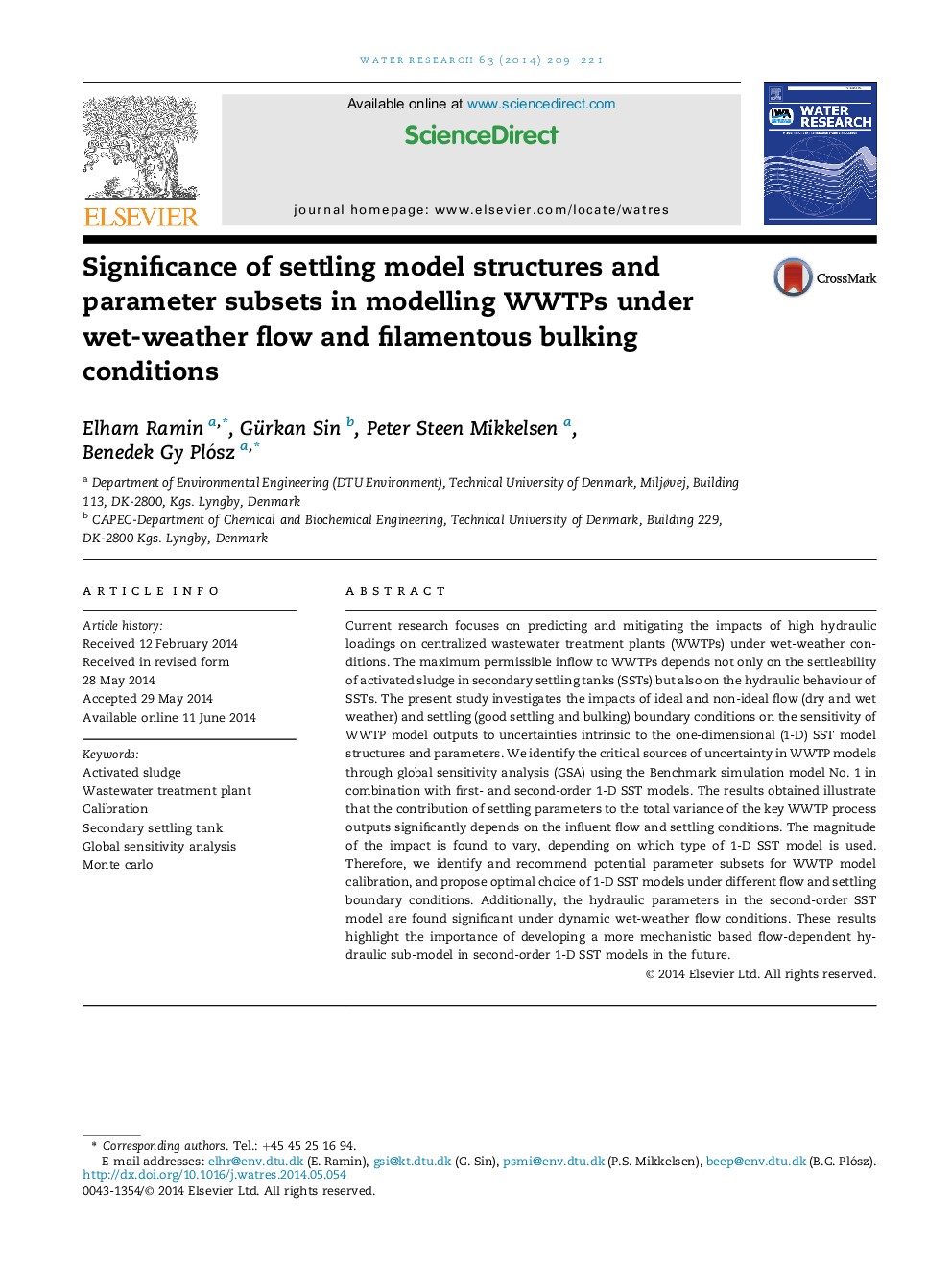| کد مقاله | کد نشریه | سال انتشار | مقاله انگلیسی | نسخه تمام متن |
|---|---|---|---|---|
| 4481474 | 1623105 | 2014 | 13 صفحه PDF | دانلود رایگان |
• We performed GSA of a WWTP model with 1st- and 2nd-order 1D SST models.
• Sensitivity measures vary under different inflow and settling boundary conditions.
• Effects of boundary condition on sensitivity measures depend on 1D SST model choice.
• We suggest 2nd-order 1D SST models for WWTP modeling under wet-weather and bulking.
• Hydraulic parameters in 2nd-order 1D SST models are significant under wet-weather.
Current research focuses on predicting and mitigating the impacts of high hydraulic loadings on centralized wastewater treatment plants (WWTPs) under wet-weather conditions. The maximum permissible inflow to WWTPs depends not only on the settleability of activated sludge in secondary settling tanks (SSTs) but also on the hydraulic behaviour of SSTs. The present study investigates the impacts of ideal and non-ideal flow (dry and wet weather) and settling (good settling and bulking) boundary conditions on the sensitivity of WWTP model outputs to uncertainties intrinsic to the one-dimensional (1-D) SST model structures and parameters. We identify the critical sources of uncertainty in WWTP models through global sensitivity analysis (GSA) using the Benchmark simulation model No. 1 in combination with first- and second-order 1-D SST models. The results obtained illustrate that the contribution of settling parameters to the total variance of the key WWTP process outputs significantly depends on the influent flow and settling conditions. The magnitude of the impact is found to vary, depending on which type of 1-D SST model is used. Therefore, we identify and recommend potential parameter subsets for WWTP model calibration, and propose optimal choice of 1-D SST models under different flow and settling boundary conditions. Additionally, the hydraulic parameters in the second-order SST model are found significant under dynamic wet-weather flow conditions. These results highlight the importance of developing a more mechanistic based flow-dependent hydraulic sub-model in second-order 1-D SST models in the future.
Figure optionsDownload high-quality image (187 K)Download as PowerPoint slide
Journal: Water Research - Volume 63, 15 October 2014, Pages 209–221
